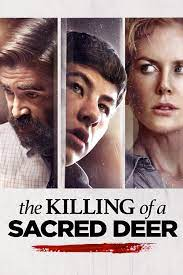My
recent post about the Hodder crime reprints of the 1960s prompted Melvyn Barnes
to get in touch with info about a subsequent library imprint. As a result, I’m
pleased to include a guest post from him – and if you’re a collector, you may
have a unique opportunity here as well:
‘I
was involved with the Deerstalker Series from 1977 to 1982. They were
published by Remploy, the public library bookbinders who also reprinted
out-of-print fiction for libraries. The series consisted of thirty-five
volumes of iconic crime fiction that I selected from my first book about the
genre, Best Detective Fiction (1975), and what makes them unique is that
they are facsimile reprints of early (often the first) editions.
I
still have my set of thirty-five, all hardbacks and immaculate in dust jackets
protected by plastic sleeves. As they were produced for libraries rather
than bookshops, not surprisingly they have become extremely scarce over the
past forty years.
I am gradually selling the vast
collection of crime fiction that I have built up since my teenage years. It really hurts, but as they say you can’t take
it/them with you! So I’m now reluctantly offering my whole set of Deerstalker
for sale, having preserved each volume since publication day, in one complete
lot. Most of them are
extremely scarce, because they had a limited print run, were not sold in
bookshops, and the public library copies became worn out and discarded.
The
series consists of –
BAILEY,
H.C. Call Mr. Fortune. Remploy, 1979. Orig pubd 1919, the
first Reginald Fortune collection.
BARR,
Robert. The Triumphs of Eugène Valmont. Remploy, 1978. Orig
pubd 1906.
BENNETT,
Margot. The Man Who Didn’t Fly. Remploy, 1977. Orig pubd
1955.
BRAMAH,
Ernest. Max Carrados Mysteries. Remploy, 1978. Orig pubd
1927, the third Max Carrados collection.
CARR,
John Dickson. The Hollow Man. Remploy, 1977. Orig pubd 1935.
COLE,
G.D.H. The Brooklyn Murders. Remploy, 1978. Orig pubd 1923,
introducing Supt Henry Wilson.
CROFTS,
Freeman Wills. The Cask. Remploy, 1977. Orig pubd 1920, his
first novel.
CROFTS,
Freeman Wills. The Pit-Prop Syndicate. Remploy, 1979. Orig
pubd 1922, his third novel.
DICKSON,
Carter. The Plague Court Murders. Remploy, 1979. Orig pubd
1934, the first Sir Henry Merrivale mystery.
EBERHART,
Mignon G. The Cases of Susan Dare. Remploy, 1979. Orig pubd
1934.
FLETCHER,
J.S. The Middle Temple Murder. Remploy, 1978. Orig pubd 1919.
FREEMAN,
R. Austin. The Red Thumb Mark. Remploy, 1979. Orig pubd 1907,
his first novel, introducing Dr. John Thorndyke.
GABORIAU,
Emile. Crime at Orcival. Remploy, 1977. Orig pubd in English
1871 as The Mystery of Orcival, featuring Monsieur Lecoq.
GABORIAU,
Emile. The Lerouge Case. Remploy, 1977. Orig pubd in English
1873 as The Widow Lerouge, featuring Monsieur Lecoq.
GREEN,
Anna Katharine. The Leavenworth Case. Remploy, 1979. Orig
pubd 1878, her first novel, introducing Ebenezer Gryce.
HARE,
Cyril. Best Detective Stories of Cyril Hare. Remploy, 1978.
Orig pubd 1959.
HUME,
Fergus. The Mystery of a Hansom Cab. Remploy, 1980. Orig pubd
1886, his first novel.
LEROUX,
Gaston. The Mystery of the Yellow Room. Remploy, 1978. Orig
pubd in English 1908, his first novel, introducing Joseph Rouletabille.
MacDONALD,
Philip. The Rasp. Remploy, 1977. Orig pubd 1924, his first
novel, introducing Colonel Anthony Gethryn.
MacDONALD,
Philip. X v. Rex. Remploy, 1980. Orig pubd 1933 under the
pseudonym Martin Porlock.
MASON,
A.E.W. The House of the Arrow. Remploy, 1978. Orig pubd 1924,
featuring Insp. Hanaud.
MILLER,
Wade. Deadly Weapon. Remploy, 1980. Orig pubd 1946, the first
novel by Bill Miller and Bob Wade under their Miller pseudonym, introducing Lt.
Austin Clapp.
MITCHELL,
Gladys. Tom Brown’s Body. Remploy, 1978. Orig pubd 1949,
featuring Mrs. Bradley.
MORRISON,
Arthur. Martin Hewitt, Investigator. Remploy, 1978.
Illustrated by Sidney Paget. Orig pubd 1894, the first collection of
Martin Hewitt stories.
MORRISON,
Arthur. Chronicles of Martin Hewitt. Remploy, 1978.
Illustrated by D. Murray Smith. Orig pubd 1895, the second collection of
Martin Hewitt stories.
ORCZY,
Baroness. The Case of Miss Elliott. Remploy, 1978. Orig pubd
1905, the first collection of The Old Man in the Corner stories.
ORCZY,
Baroness. The Old Man in the Corner. Remploy, 1977. Orig pubd
1909, the second collection of The Old Man in the Corner stories.
REEVE,
Arthur B. The Silent Bullet. Remploy, 1979. Orig pubd 1912,
the first collection of stories featuring “Craig Kennedy, Scientific
Detective”.
RICE,
Craig. Trial by Fury. Remploy, 1977. Orig pubd 1941.
VAN
DINE, S.S. The Canary Murder Case. Remploy, 1982. Orig pubd
1927, the second Philo Vance mystery.
VAN
DINE, S.S. The Greene Murder Case. Remploy, 1982. Orig pubd
1928, the third Philo Vance mystery.
VAN
DINE, S.S. The Bishop Murder Case. Remploy, 1982. Orig pubd
1929, the fourth Philo Vance mystery.
WALLACE,
Edgar. The Four Just Men. Remploy, 1979. Orig pubd 1905, his
first crime novel.
WIEGAND,
William. At Last, Mr. Tolliver. Remploy, 1980. Orig pubd
1950, his only crime novel.
WOOLRICH,
Cornell. The Bride Wore Black. Remploy, 1977. Orig pubd
1940.’
I imagine that serious
collectors will be attracted to this intriguing set. If you’d like more info, please contact
Melvyn on 01449 673777 or (if the link works -not confident!) at melvyn.barnes@oldnewton.com





















